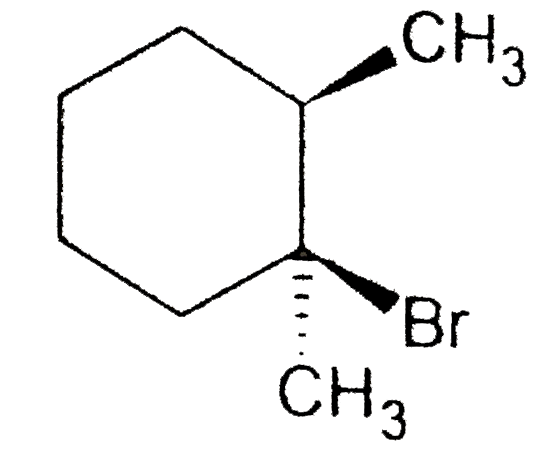Theoretically a normal phenotype is expressed when a particular substrate transform in to product but in which of following conditon phenotype may be affected-
When the modified allele produce normal enzyme
When the modified allele produce a non functional enzyme
When the unmodified allele produce no enzyme
All the above
The correct Answer is:B
To solve the question regarding the conditions under which a phenotype may be affected when a substrate is transformed into a product, we can follow these steps:
1. Understanding the Normal Phenotype:
- A normal phenotype is expressed when a specific substrate is converted into a product through the action of enzymes. These enzymes are typically produced by genes.
2. Role of Alleles:
- Alleles are different versions of a gene. A modified allele can lead to changes in the enzyme produced, which in turn can affect the phenotype.
3. Analyzing the Conditions:
- Condition 1: If a modified allele produces a normal enzyme, the phenotype remains unaffected. This means that the substrate is still converted into the product efficiently.
- Condition 2: If a modified allele produces a non-functional enzyme, the conversion of the substrate into the product is impaired. This will lead to a change in the phenotype because the necessary product is not being formed.
- Condition 3: If an unmodified allele produces no enzyme, this condition is not possible because an unmodified allele typically produces a normal enzyme. Thus, the phenotype would not be affected in this case.
4. Conclusion:
- Based on the analysis, the only condition that would lead to an affected phenotype is when the modified allele produces a non-functional enzyme. Therefore, the correct answer is that the phenotype may be affected when the modified allele produces a non-functional enzyme.
Final Answer:
- The phenotype may be affected when the modified allele produces a non-functional enzyme.
- A normal phenotype is expressed when a specific substrate is converted into a product through the action of enzymes. These enzymes are typically produced by genes.
- Alleles are different versions of a gene. A modified allele can lead to changes in the enzyme produced, which in turn can affect the phenotype.
- Condition 1: If a modified allele produces a normal enzyme, the phenotype remains unaffected. This means that the substrate is still converted into the product efficiently.
- Condition 2: If a modified allele produces a non-functional enzyme, the conversion of the substrate into the product is impaired. This will lead to a change in the phenotype because the necessary product is not being formed.
- Condition 3: If an unmodified allele produces no enzyme, this condition is not possible because an unmodified allele typically produces a normal enzyme. Thus, the phenotype would not be affected in this case.
- Based on the analysis, the only condition that would lead to an affected phenotype is when the modified allele produces a non-functional enzyme. Therefore, the correct answer is that the phenotype may be affected when the modified allele produces a non-functional enzyme.
- The phenotype may be affected when the modified allele produces a non-functional enzyme.
Topper's Solved these Questions
- GENETICS & MOLECULAR BASIS OF INHERITANCE AND MUTATIONBOOK - ALLENCHAPTER - GENETICS & MOLECULAR BASIS OF INHERITANCE AND MUTATIONEXERCISE - EXERCISE-IV (ASSERTION & REASON)
144 Videos
- GENETICS & MOLECULAR BASIS OF INHERITANCE AND MUTATIONBOOK - ALLENCHAPTER - GENETICS & MOLECULAR BASIS OF INHERITANCE AND MUTATIONEXERCISE - EXERCISE-II (PREVIOUS YEAR QUESTIONS
104 Videos
- GENETICS BOOK - ALLENCHAPTER - GENETICS EXERCISE - Question
58 Videos
- GENETICS (PRINCIPLES OF INHERITANCE AND VARIATION) (MOLECULAR BASIS OF INHERITANCE)BOOK - ALLENCHAPTER - GENETICS (PRINCIPLES OF INHERITANCE AND VARIATION) (MOLECULAR BASIS OF INHERITANCE)EXERCISE - Question
53 Videos
Similar Questions
The gene, which affects many phenotypes.
View SolutionWhich of the following depicts phenotypic ratio of dihybrid cross?
View SolutionWhich among the given phenotypes is expressed in pure line condition only?
View SolutionWhich of the following crosses and resultant phenotypic ratios are mismatched?
View SolutionWhich of the following is associated with multiple phenotypes
View SolutionWhich one of the following crosses shows phenotypic ratio of 3:1?
View SolutionIn a population of an area, the difference in the natality rate and mortality rate is zero in a particular year, but the population density has decreased. Which of the following may be the reason for this decrease ?
View SolutionThe major product obtained when following substrate is subjected to E2 reaction will be

View SolutionWhich of the following crossess will produce 1 : 1 phenotypic ratio :-
View SolutionWhich of the following is used as a substrate for the production of CH3CH2OH ?
View Solution
